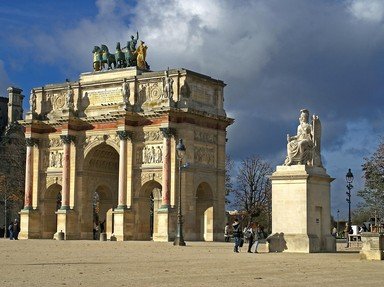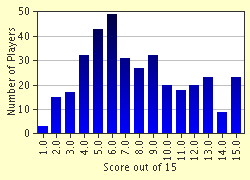Quiz Answer Key and Fun Facts
1. Born in 1769, where was Arthur Wellesley born?
2. Who was Arthur Wellesley's father?
3. Serving in India as a Brigade Commander, throughout the Seringapatam expedition, Arthur Wellesley impressed his superior. Who was he?
4. In 1803, although outnumbered ten to one, General Arthur Wellesley defeated the well trained Mahratta army in one of the fiercest battles in India. It was the first of many victories by the future Duke of Wellington, and 'the bloodiest for the number', he recalled, 'that I ever saw'. Where was this victory?
5. Returning to England, Wellesley dabbled in politics and was elected MP for where?
6. Arthur Wellesley remained in the army and in 1808 he was sent where to fight against the French?
7. Sir Arthur Wellesley took command of the British army in the Peninsula after the death of which commander?
8. Where on 21 August, 1808 was Sir Arthur Wellesley and an Army of 17,000 Anglo-Portuguese troops, attacked by General Junot and the Army of Portugal?
9. Where on 27-28 July, 1809 was Wellington's army of 55,000 men and 60 cannons opposed by a French force of 46,000 troops and 80 guns under the joint command of King Joseph Bonaparte and Marshal Jourdan?
10. Which Spanish General fought with Wellington, on 27-28 July 1809, supplying 35,000 of the Allied troops?
11. At the Battle of Bussaco in 1810 which of Napoleon's Marshalls did Wellington defeat?
12. Wellington was nicknamed 'nosey' by his men, but what nickname did his officers give him?
13. Where on 21 June 1813 did Wellington's army win a stunning victory over the French, breaking the back of the French occupation of Spain?
14. In February 1815 the now Duke of Wellington took the place of Viscount Castlereagh, the foreign secretary, at the Congress of?
15. On 18 June 1815, Wellington won the famous battle of Waterloo, defeating Napoleon. Roughly how large was Wellington's Allied Army at Waterloo?
Source: Author
deadmeat
This quiz was reviewed by FunTrivia editor
gtho4 before going online.
Any errors found in FunTrivia content are routinely corrected through our feedback system.


